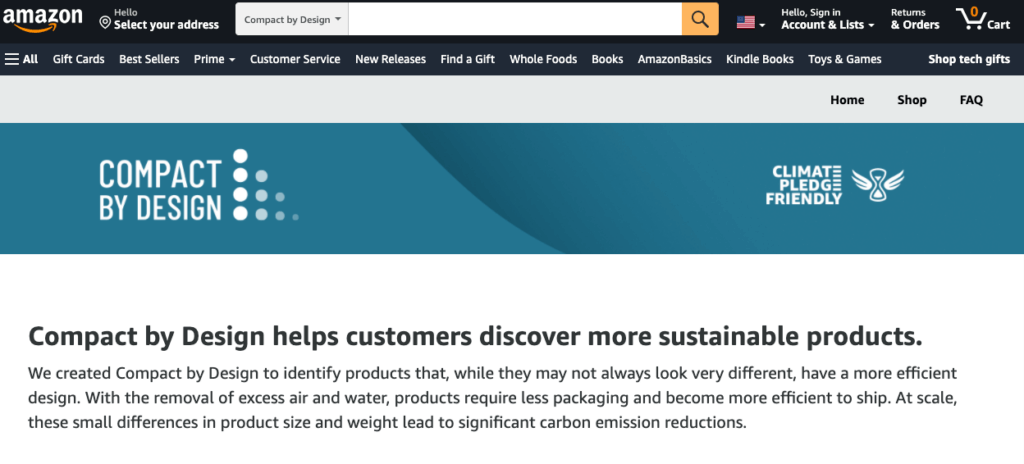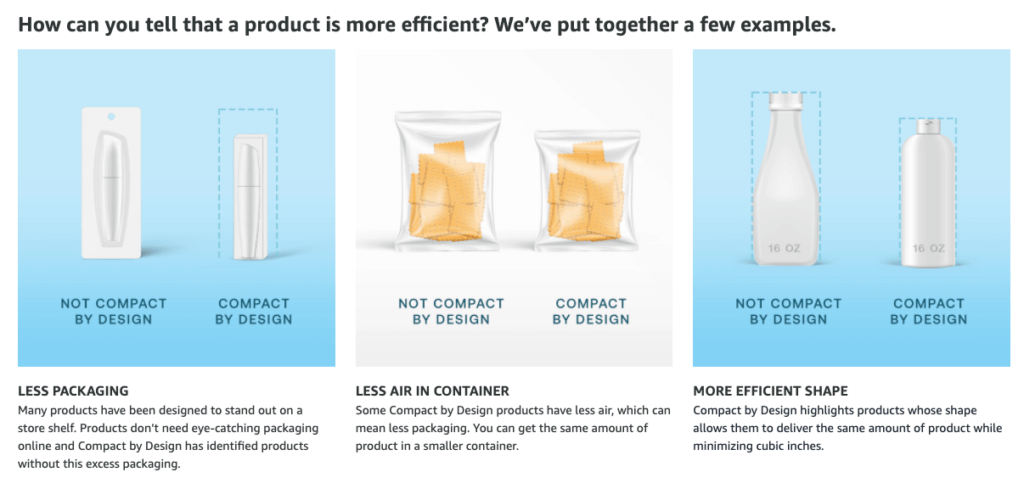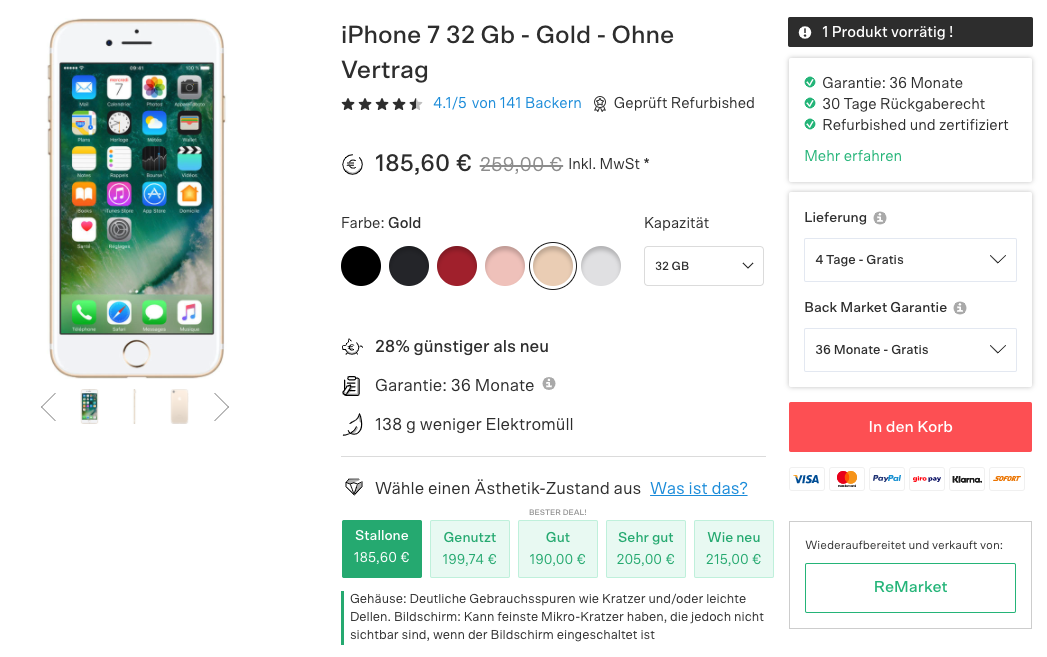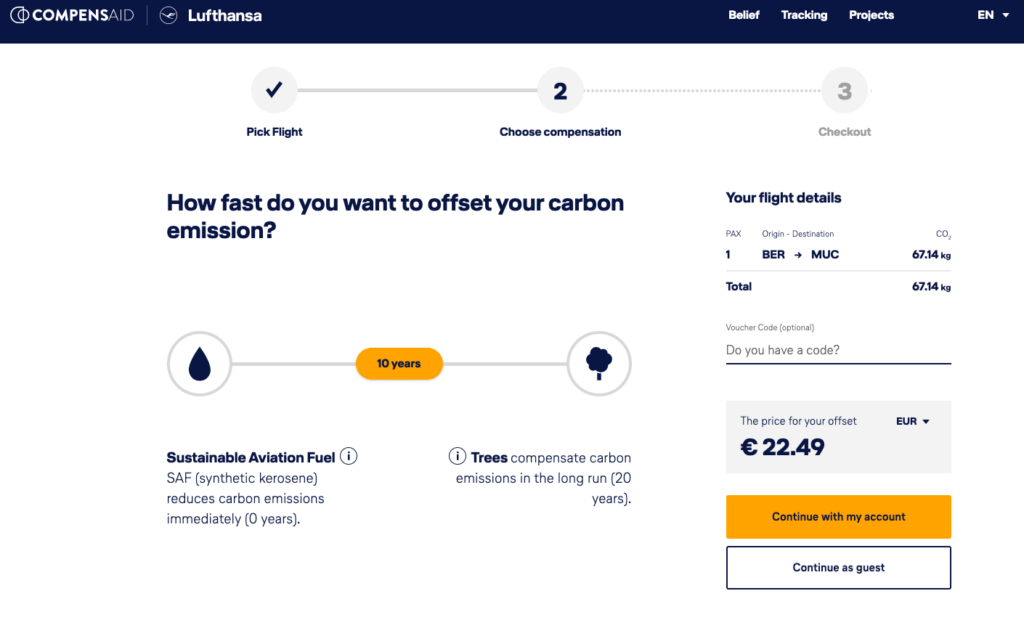Sustainability in eCommerce: Why and how businesses are responding to demand for change
A rising demand for change
The push for climate change action has come a long way from ads of a lone polar bear on a melting iceberg. Public demand for more drastic measures is more significant than ever. In Germany, 81% of German citizens see a substantial need for climate protection action. Besides extreme weather patterns and rising water levels, the urgency for change was further fueled by a 2018 report by the United Nations’ Intergovernmental Panel on Climate Change (IPCC). The world’s leading climate scientists announced that we had less than a decade left to stop irreversible damage to the planet. If we want to keep temperature increases below 1.5°C, global Co2 emissions need to decline by 45% from today’s levels by the year 2030.
With this hard deadline came the ongoing worldwide climate strikes, a movement that’s been largely mobilized by young people concerned about their future. Corporations and governments are under increasing pressure to making seismic — not incremental —shifts to decarbonize the economy and society. Unlike the previous generation’s warnings, the onus is no longer solely on the shoulders of the individual. It’s going to take more than separating one’s trash or carrying around a cloth tote bag to save the planet.
With consumer culture contributing significantly to greenhouse gas emissions, there has long been a conflict between the economy and the environment. In 2020, eCommerce sales in Germany experienced a 10% growth compared to the previous year. Catalyzed by the global health pandemic, a report by RetailX has forecasted that B2C ecommerce turnover in Germany (including goods and services) would be worth €103.4 billion by the end of 2020. With consuming fewer goods excluded as a viable option to reduce emissions, businesses such as Amazon, Deutsche Bahn, eBay, Flixbus, and Zalando have implemented sustainable solutions. Most significantly, these corporations can contribute in a way that governments are limited in — they have the speed and agility to make it happen now.
Sustainability is no longer a nice to have
Long before crowds became a public health hazard, the convenience of shopping online just couldn’t be beat. A 2020 e-commerce survey reported 67% of Germans said their primary driver for online purchases was “direct delivery to my home,” followed by the fact that online shopping is “around the clock.” The lure of online shopping has raised expectations of what people expect from retailers: fast delivery, product availability online, and an abundance of product information.
For these reasons, businesses need to prepare for this total evolutional and behavioral shift— including its impact on the environment. To this end, there are several approaches that businesses are taking to meet consumer demand for both products and services, and prevent and mitigate climate change action.
Corporate initiatives can be broadly split into two categories:
- Initiatives that aim to reduce emissions
Once a company knows how much carbon its emitting, executives may implement carbon reduction measures. The changes are applied to a particular part of the company. It can come in many forms, from optimizing the supply chain, using clean energy, and recycling used materials and goods. The efforts may only be applied to one part of the business or to the entire process from end to end.
2) Initiatives that aim to offset emissions
As defined by the UN, offsetting is a climate action that enables individuals and organizations to compensate for the emissions they cannot avoid by supporting worthy projects that reduce emissions elsewhere in the world. Specialized companies have emerged and are already providing CO2 compensation services directly to companies or partnering with platforms to offer it to end customers.
Initiatives that aim to reduce emissions
Transparency in supply chain or manufacturing
Supply chain transparency is a growing trend in the retail industry. Knowing where factories are located, how many people work there, and where they get their raw materials affect the brand. According to the 2019 Fashion Transparency Index, 80% of a survey of 5000 consumers in Europe agreed that fashion brands should disclose their manufacturers.
Fast fashion has fueled consumption and, thus, more waste. Textile production worldwide creates more than a billion tons of Co2 per year — that’s more than all international flights and shipping combined. The fashion industry contributes to around 10% of global greenhouse gas emissions due to its long supply chains and energy-intensive production. With online marketplaces selling hundreds of different labels, it’s harder for companies to have one blanket strategy that will affect every transaction on their platform.
Executives don’t have to reinvent the wheel to bring sustainability to eCommerce. Simply holding their brand accountable for every step of their supply chain can lead to managers picking more sustainable factory partners.
According to Zalando’s 2019 annual report, their total market-based greenhouse gas emissions increased to 6% from the previous year to 262,511 metric tons of Co2 equivalent. In a bid to reduce its carbon footprint, the company announced that it would increase its supply chain transparency for its private label. Additionally, Zalando gives the option of carbon-neutral delivery with a flat EUR 0.25 incl VAT fee for each order. This compensates for the packaging, transport, and delivery of their products. This option is available to customers at checkout.
Asos, Zalando’s prominent fashion competitor in Germany, publishes a map of their factories on their corporate website with details on the number of factories, workers per factory, and the ratio of men and women per location. The interactive map is accompanied by a more detailed PDF of the name of the factory and address. The British retailer also publishes how much carbon they emit from the entire end to end journey of fulfilling a customer order.
Compared to multi-seller marketplaces, individual brands have more control over their supply chain. Adidas offers the public a comprehensive look at their factory list and the materials they use for their products. The company publishes its approach to sourcing materials, claiming to take a “life cycle approach” to their fabrics. Their sourcers evaluate materials based on land use, animal welfare, energy consumption, and water consumption.
One of the most efficient ways to reduce emissions is to run on clean energy. Deutsche Bahn has taken a different route to encourage people to get out of their cars and into sustainable transportation. As of January 2018, Deutsche Bahn uses 100% green electricity for their long-distance ICEs, IC, and EC trains within Germany. So, rather than offering carbon compensation, the railway company offers a free comparison calculator to show how climate-friendly a trip on one of their trains is, compared to driving or flying.
One of the most efficient ways to reduce emissions is to run on clean energy. Deutsche Bahn has taken a different route to encourage people to get out of their cars and into sustainable transportation. As of January 2018, Deutsche Bahn uses 100% green electricity for their long-distance ICEs, IC, and EC trains within Germany. So, rather than offering carbon compensation, the railway company offers a free comparison calculator to show how climate-friendly a trip on one of their trains is, compared to driving or flying.
What a company chooses to do with their sustainability programs largely depends on how complicated their supply chain is, what types of services they offer, and what types of products they sell. There is no one size fits all when it comes to offsetting.
Reducing product packaging
In addition to manufacturing, product packaging is another part of the fulfillment journey that costs the environment. According to data published by the Federal Environmental Agency, Germany amassed a record 18.7 million tonsof packaging in 2017. That’s 5% more than the previous year. Amazon, which made USD280 billion in revenue in 2019, is attempting to tackle packaging en masse. The online seller, marketplace, and service provider announced the Compact by Design initiative as a part of their Climate Pledge Friendlyprogram in late 2020. Compact by Design enables customers to filter their search for products that have a more efficient design.
Examples of Amazon’s Compact by Design
Germany’s leading drug store chain, DM, offers climate-neutral brands such as Lavera and МОЙ, and creates more environmentally product packaging with their home brand, Denk Mit. The retailer claims to be reducing the amount of plastic used and applying more sustainable packaging methods such as using recycled paper. DM is also promoting and supplying more solid product alternatives for soap, lotion, conditioner, and shampoo. Solid products don’t need elaborate external packaging and are primarily wrapped in a piece of cardboard for transporting and display on shelves. They promote these environmentally friendly products via their YouTube channel, which has 131,000 subscribers.
Selling refurbished goods
A circular economy aims to reduce the consumption of finite resources by designing an economy that keeps products and materials in use — as opposed to throwing things out and buying new ones. The concept encourages repairing and reselling products and transitioning to renewable energy sources. Fundamentally, the idea is to rethink and redesign the way things are produced, such as manufacturing products that can be repaired easily. In Germany, there is even a law to promote the circular economy and to ensure environmentally friendly waste management. The Circular Economy Act came into force on June 1, 2012.
Despite the Act, nearly 853,124 tons of electrical and electronic waste were collected in Germany in 2018. About 90% of that comes from households.
Refurbished items play a key role in the circular economy. Used items, display items, items with minor factory defects, factory returns, or returned items fall into the category of refurbished items. They are often sold by certified sellers and come with buyers’ insurance. eBay is doing this with their new B-Ware category. Customers can find over 3 million “good as new” items for up to half of the original price on the new landing page. The products are checked to ensure they work, and eBay buyer protection applies to the goods in this shopping category.
The beauty of refurbished products is that there are plenty of marketing opportunities to make customers feel good about both saving money and protecting the environment. Back Market is another online marketplace that connects trusted refurbishing factories with customers. Many products displayed on the site include:
- Price of the phone compared to brand new
- How much the customer saves by buying refurb
- How much electronic waste the customer saves with the purchase
- A review from previous customers to give shoppers piece of mind
Germany has a competitive selection of resellers. Each of them has varying durations of warranties and refund policies. Some of them refurbish, others just check quality, some buy and sell, some just sell. One thing they have all in common is that they brand themselves as trusted third-party partners in the reselling business. They are “brokers” to ensure that customers can safely purchase used products. Some household names include refurbed.de, rebuy.de, asgoodasnew.de, and flip4new, the latter being a buyer only.
Initiatives that aim to offset emissions
If a company can’t reduce their Co2 emissions, they can either improve their manufacturing processes to make them more climate-friendly or offset their emissions. Offsetting means buying carbon credits from other companies or energy-efficient projects with a surplus of carbon credits. A carbon credit represents the right to emit one metric ton of carbon dioxide. They are components of national and international approaches to reduce the emission of greenhouse gases.
Environmental projects can reduce greenhouse gas emissions, and some of these projects may not be viable without revenue from the sale of carbon credits. Companies that can’t manufacture as environmentally friendly as they can finance — through buying carbon credits — climate-friendly projects that reduce emissions projects that could otherwise not be paid for.
While emissions trading is mainly a B2B market, more companies are entering a B2C market. They offer consumers the option to purchase carbon credits to offset or lower their carbon footprint. For example, this could be for the carbon emission of a specific item, a new phone, the consumer buys, or more generally his average yearly carbon footprint from traveling or using a car. The companies which sell those carbon credits are usually an aggregator for individual projects around the globe.
Carbon offsetting in the transportation sector
Road traffic accounted for the greatest share (over 96%) of Co2 emissions in Germany’s transport sector. FlixBus, a long-distance bus company, advertises that people who choose buses over cars for longer routes can reduce their individual Co2 emissions by 80%. The German company has partnered with Atmosfair to offer carbon compensation to customers at checkout. In FlixBus’s most recent update, customers’ contributions go directly to Atmosfair’s UN-accredited Gold Standard Projects in Rwanda.
With flights making up about 2% of the total greenhouse gas emissions for transport, airlines are also doing their part. Lufthansa, Germany’s largest airline, partnered with Swiss-based myclimate to provide customers with a carbon calculator and offsetting program. The calculator enables the traveler to input their departure and arrival information and calculate both the emissions and the speed of how those emissions are offset.
Their entire aircraft fleet was studied to clarify how much kerosene a flight would consume from gate to gate, including taxiing procedures and other ground operations. First, the calculator estimates the carbon emissions; then, it converts it to a cost. This fee can either be used for a reforestation project — which can take an estimated number of years to offset your trip — or used to offset Sustainable Aviation Fuel (SAF). By purchasing the fuel, the emissions can be offset immediately as SAF emits up to 80% less Co2 compared to conventional jet fuel.
Carbon offsetting for products
Multi-seller marketplaces have thousands of different types of products and brands. To standardize the carbon calculation process, online marketplaces like eBay and Digitec Galaxus work with a carbon finance consultancy like South Pole. The respective marketplaces worked separately with South Pole to estimate the carbon footprint of “average products”. The measurement starts with the procurement of raw materials all the way to how it’s delivered to the customer. To define the average product, they analyzed the bestselling ones.
Based on this analysis, the team defined a representative weight for each product category and an emission factor. Based on the modeled weight (in kg) and the emission factor (kgCO2e/kg product), the South Pole consultants then calculated the Co2 emissions. At the checkout, customers are presented with an estimation of their carbon footprint for the product and an option to offset emissions by choosing from three environmental projects that South Pole partners with.
Companies may choose to focus their offsetting efforts where they emit the most. Etsy, for example, is a marketplace that focuses on handmade or vintage items and craft suppliers. With low manufacturing emissions, 98% of their carbon impact stemmed from items shipped from Etsy sellers to Etsy buyers.
This shipping isn’t directly in Etsy’s realm of control, but the company partnered with 3Degree to offset all shipping costs — and foot the bill. The company doesn’t charge customers for this; they pay for it. Instead of asking customers to opt-in, there’s a leaf logo at check out that says, “Etsy offsets carbon emissions from every delivery.”
Standards, certifications, and projects
As mentioned earlier in the section Understanding Carbon Offsetting, some customers are more inclined to opt into paying for carbon offsetting if they know exactly where their money is going. There are third-party verifications for environmental projects to create more structure around this emerging carbon trading market and protect customers who voluntarily offset their emissions.
Carbon offsetting standards verify the legitimacy of the offsetting projects. These certification standards vary depending on market share, the different types of tests they do, and the different projects they specialize in. You can learn more about the different types of standards at the WWF. Here are a few examples:
- Verified carbon standard
- Gold Standard
- Green-e Climate standard
Another seal of approval for a carbon offsetting project is the United Nations Framework Convention on Climate Change (UNFCCC) certified projects. These vetted projects reduce, avoid, or remove greenhouse gases from the atmosphere. South Pole, a carbon compensation partner, used by several marketplaces in Germany, is an official partner of the UNFCCC and offers programs aligned with the aims of the Paris Agreement and the UN Sustainable Development Goals.
For the voluntary carbon offsetting projects mentioned in this paper, most of them fit into the category of large-scale reforestation, renewable energy, or various community projects. These initiatives are located around the world, with a large concentration of them in Africa and Asia. Some common types of projects include contributing to:
- Access to clean, safe drinking water
- Geothermal energy
- Wind energy
- Forest conservation
- Hydropower
- Sustainable farming and agriculture
Additionally, the initiatives work directly with the local community, create jobs, build infrastructure, teaches local populations new skills, and makes communities less dependent on fossil fuels.
Closing thoughts
As public awareness of the impacts of climate change increases, so does the question of solutions. While government action is basic but usually slow, companies can be more agile and have the flexibility and creativity to take transformative action. And when companies contribute to sustainability, ethics and business development can be in harmony.
Sustainability measures often have many winners: the environment, society, customers and the companies themselves. The latter companies can combine social commitment with competitive advantages because climate-neutral concepts are increasingly accepted or even demanded by consumers. The large e-commerce platforms in particular can use their real strength here: Bringing services to the market that are to the customer’s advantage, while at the same time offering opportunities to the selling retailers that they would not be able to tap into on their own due to their small size. Partnerships and collaborations are often the key to meaningful solutions.
Now is the time to act. This summary from eStrategy Consulting highlights the variety of ways a company can offset its emissions or take steps to reduce its carbon footprint.
If you want to stay up to date updated on our free studies and articles, follow us on LinkedIn.



